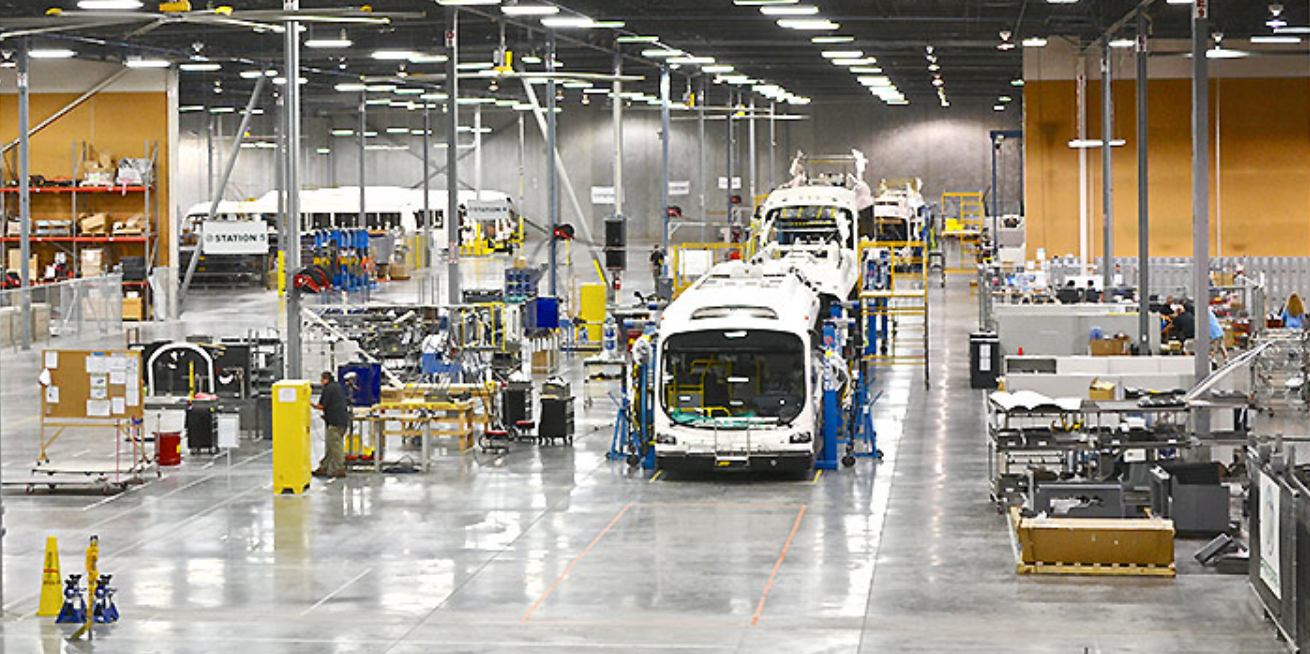California EV Trucks Help Cut Emissions, Spur Employment
The deployment of electric trucks and buses can play a significant role in reducing air pollution and global warming emissions, and nowhere is this more visible than in California.
For example, when compared to diesel, electric transit buses powered by clean electricity have dramatically lower lifecycle global warming emissions, as well as particulate matter and nitrogen oxide emissions.
The stakes in transportation are high, as the sector is the largest source of global warming pollution in California, creating nearly 50 percent of the state’s emissions when accounting for production, refining and petroleum use. n What’s more, a growing number of these emissions come from trucks, buses, and other heavy-duty vehicles, which also generate more particulate matter pollution than all of California’s power plants combined.
The good news is that many types of heavy duty vehicles can be electrified – cutting pollution, combating poverty and reducing climate pollution. This growing industry can also be a source of good jobs – jobs that, with the right policies and training programs, can offer important opportunities to workers from underserved communities.
This pollution severely impacts public health, especially in low-income communities and communities of color, who are more likely to live near busy roads and other sources of pollution. Vehicle pollution increases risks of cancer, damages respiratory and cardiovascular systems, and can negatively impact children’s lung development and adult’s reproductive health.
And get this: Heavy-duty EVs are up to four times more efficient than diesel and natural gas engines.
Advancements in the sector mean that these vehicles are ready to meet many of today’s demanding heavy-duty applications, while being up to four times more efficient when compared to their diesel and natural gas counterparts. The sector also presents a significant opportunity to place underserved community workers into good-paying jobs, especially if the right training programs are provided.
But there indeed are costs associated with the switch.
While electric buses and trucks may have higher initial costs of ownership, reduced maintenance and fueling costs can reduce the total cost of ownership, effectively making them a more affordable choice than traditional diesel buses. For example, the transit bus manufacturer New Flyer advertises savings of up to $400,000 over the lifetime of the bus in reduced fuel costs, which could potentially save public transit agencies up to $100,000 in total ownership costs over the lifetime of the vehicle.
In order to materialize these benefits, certain barriers need to be overcome through key policies, like financial incentives – especially for small businesses –to help offset the upfront capital and infrastructure costs; smart utility policies and electricity rate options that facilitate the transition to electrification; and regulatory measures that drive investment, increase volumes, and reduce technology costs.
In terms of employment, new technologies are stimulating demand for new jobs and new skills and employment in the sector is growing throughout the country. In California, clean energy jobs are growing even faster than in the rest of the United States and the state leads the way for simultaneously growing the economy and reducing global warming emissions. Over 500,000 Californians work in energy efficiency, solar power and related fields like electric vehicle production, EV-charging, infrastructure and EV maintenance. Assemblers, electricians and EV-service technicians were identified as important occupations for opening up job opportunities in underserved communities.











